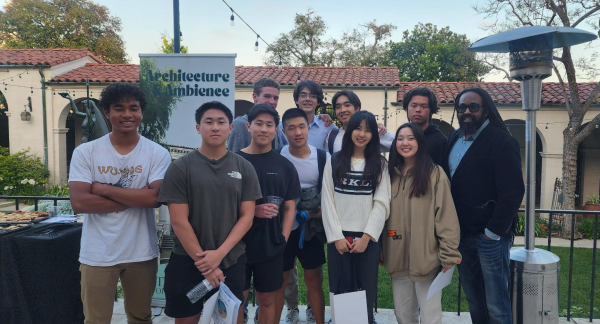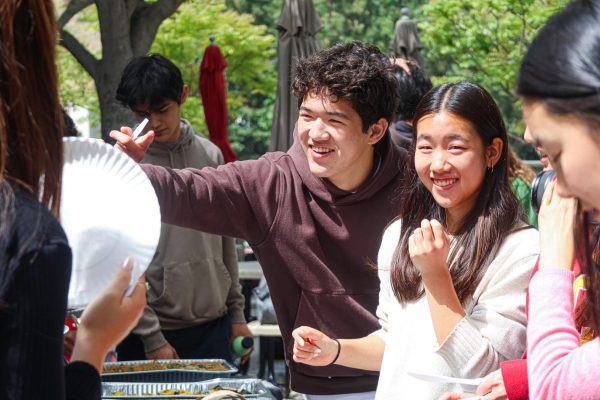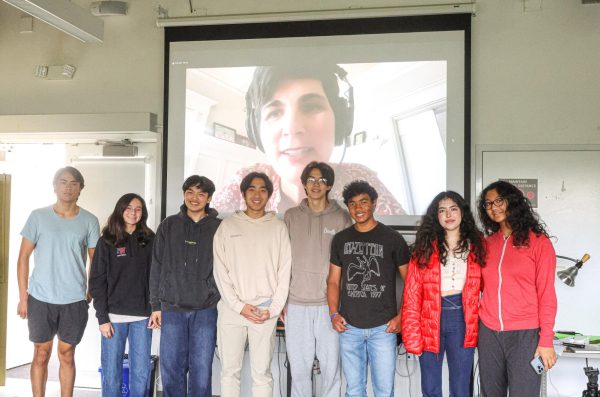Letter to the Editors: Setting the record straight
Jewish Family Alliance co-chair Kayla Graiwer ’23 & Jewish Club co-leader Manu Markman ’23 respond to an opinion article published in The Chronicle about antisemitism on campus.
February 15, 2023
This section is generally dedicated to giving opinions on the talk of the town—school activities, cultural phenomena and the like. However, today, we, as leaders of the Jewish community at Harvard-Westlake, would like the opportunity to respond to an opinion piece published in this section in early February titled “Addressing campus antisemitism.” We believe it is in the best interest of the Jewish student body that the narrative be corrected and that the truth, not merely an outsider’s assumptions, be published.
Since the beginning of this school year in late August, starting almost six months ago, there have been five known incidents where Swastikas have been discovered on school property—drawn on a whiteboard, carved onto multiple desks, and poked into a pinboard. Whether the intent is latent antisemitism or attention-seeking, the resulting Swastika clearly presents and, to use modern lingo, “platforms” antisemitism in all its forms, not just the actions that took place in the Holocaust. Rightly, Jewish students, teachers and parents have been outraged, disappointed, concerned and fearful. As many Harvard-Westlake students’ families had to escape the pogroms rife in 19th century Europe or the Holocaust, seeing the re-emergence of the Swastika’s prominence—in their own school, no less—must bring to mind the stories their parents and grandparents have told them. We felt that, on the behalf of our community, we should not only work with the administration on the education aspect, but also exhibit the unity and strength inherent in Harvard-Westlake’s Jewish community.
To this end, we felt it would be fitting to make and hang posters, with the administration’s approval, on International Holocaust Remembrance Day, to decry the contemptible presence of antisemitism on campus and to teach about Jewish influence on culture and history. Part of the intent behind the posters was to give students the opportunity to express their frustrations at the antisemitism that is seemingly rife at Harvard-Westlake. We do not believe in censoring speech, or controlling the narrative, which is why we allowed students the creative and intellectual license to write what they wanted to on the posters. Because of this, the dramatic variation in tone and content achieves our goal with the posters, while also generating productive and informative discussion about antisemitism. The posters were not meant to be performative — instead, they were put up to bring awareness to the rise in antisemitism, specifically on a day as important as Holocaust Remembrance Day, and so in our view the charge of performance missed the mark. However, the posters are a miniscule initiative relative to the ones we have been working on with the administration.
Furthermore, the author, who ends her article by saying that the Jewish students “must respond with dignity and a unified purpose” never publicly shared her opinion of how the Jewish community should have responded before her piece was printed. In the article, she never mentions any alternative solutions, either. Instead, she simply declares that Jewish students must be “unified,” which she doesn’t exemplify by writing an article criticizing her own fellow Jewish students’ attempt to make positive change. To claim that “You don’t respond to Nazism” with Harry Styles, Borat or Zionism leads to the notion that there is a correct way to respond to these Swastikas. However, the truth is that the signs have generated robust discussion about antisemitism, which for us means its purpose has been fulfilled while not harming our other efforts responding to the Swastikas.
In “Addressing campus antisemitism,” concerns over the “anti-Zionism is antisemitism” posters were also brought up. The author begins by labeling this statement as “true,” but seems to dismiss it later in the article, claiming that “you don’t respond to Nazism with Zionism” because “the Nazi sympathizers you’re confronting said nothing about Zionism.” She implies that the inclusion of Zionism into our messaging was preposterous: “It’s so baffling that [Jewish Club leaders] would dilute and shroud our fight against Nazism with cutesy, pop-culture-oriented and even Zionist messages.” In this double-back, she ignores the history behind Zionism.
Jewish inhabitants of Israel have faced constant exile from the territory, compounded by the renaming of the province to “Palestine,” meant to strip its Jewish inhabitants of the connection they had with the land. Jews have always had a strong cultural and religious connection to Eretz Yisrael, not only stemming from the Torah itself, but also the centuries of self-rule and cultivation on that land. When Zionism began attracting many members of the Jewish diaspora to “make aliyah” back to the holy land in the 1940’s, the Grand Mufti of Jerusalem, Hajj Amin al-Husseini, met with Adolf Hitler to discuss sending any Jew, who were arriving in Palestine, to concentration camps in Germany, Poland and Austria. Indeed, they collaborated in the hunting down and killing of Jews. The Nazis never have to comment on Zionism because the identification of a Nazi confirms his/her anti-Zionist belief. There is a very clear historical nexus between Nazism and anti-Zionism, so we felt the need to address both the anti-Zionism that is pervasive throughout the school (as evidenced by the streams of students overwhelming Jewish student and faculty leaders with complaints over the “anti-Zionism is antisemitism” statement) along with the more obvious antisemitism, in the form of Swastikas.
Finally, the article frames the posters as an anti-administration sentiment on the part of the Jewish students. This could not be further from the truth. First, it is important to point out that the posters were put up with the approval of the administration, and so it is inherently impossible for the action to be anti-administration or in any way counterproductive vis-a-vis our work with the administration. Furthermore, while we believe the administration’s actions so far have been far from “firm and immediate,” we are nevertheless optimistic that we can work together to greatly improve the school’s curricula to better reflect Jewish contributions to history and culture.
The posters put up around school were just one of the many ways in which the Jewish student body will continue to fight the appalling presence of antisemitism at school. Not sharing opinions and then mischaracterizing our initiative is very evidently not the way to do that. Five Swastikas in six months necessitates a response, and we will work to do just that. We must respond with dignity and a unified purpose.







































